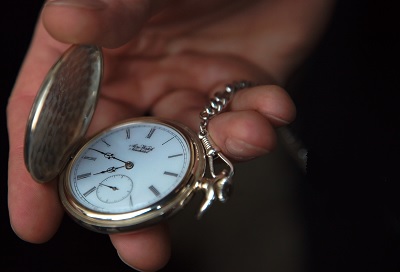A startup in California is coming ever closer to bringing printable zinc batteries to reality.
Imprint Energy, a Californian startup, has now managed to secure $6 million in funding in order to bring its paper thin, flexible batteries – which would be ideal for wearable technology – to the market for the first time.
This tech would make it possible for devices to become considerably smaller than they currently are.
At the moment, device manufacturers – particularly in the area of wearable technology – are limited as to how small they can make their gadgets while still allowing them to maintain a reasonable performance, because today’s batteries take up space, and are typically their largest components. Even the Li-Ion battery packs, which are not necessarily huge, still take up too much room when it comes to the wearables market. Should Imprint Energy be successful, that situation will rapidly change.
The opportunity that this type of printable ultra thin battery offers wearable technology manufacturers is nearly limitless.
The scientists at Imprint Energy decided to take aim at a rechargeable, printable zinc battery, instead of taking the traditional route of making incremental improvements to the battery technology that is already in existence.
This solid state technology, which has been nicknamed ZincPoly, can be printed in a number of different shapes and sizes, it is flexible, and is exceptionally thinner than anything else that is currently on the market. Moreover, these high density cells have a lifetime that is about the same as Li-Ion and can outperform today’s conventional batteries, as well.
To continue along the list of advantages that are offered by using Zinc is that – unlike its current counterparts – it is non-toxic. It is also appealing in that it comes with a low price tag when it comes to the cost of its development, as it is a highly abundant and available material. It is a durable material, as batteries made out of it will continue to function regardless of whether they have been punctured or compressed.
By the writing of this article, Imprint Energy had not released a time by which it expects that this tech will find its way to market shelves. However, the company has confirmed that it will be using the funds to speed up the development stage while securing design wins within the Internet of Things and wearable technology market spaces.

 Pocket watches eventually turned into wristwatches, which were also criticized as being somewhat useless and unattractive. During World War I, soldiers began using wristwatches to coordinate attacks in a new way, using time to measure assaults. Suddenly, these wearable gadgets became more popular and the criticism directed at them and became very popular among people throughout the world. Even today, wristwatches are considered to be some of the most fashionable accessories in the world, especially among men.
Pocket watches eventually turned into wristwatches, which were also criticized as being somewhat useless and unattractive. During World War I, soldiers began using wristwatches to coordinate attacks in a new way, using time to measure assaults. Suddenly, these wearable gadgets became more popular and the criticism directed at them and became very popular among people throughout the world. Even today, wristwatches are considered to be some of the most fashionable accessories in the world, especially among men.